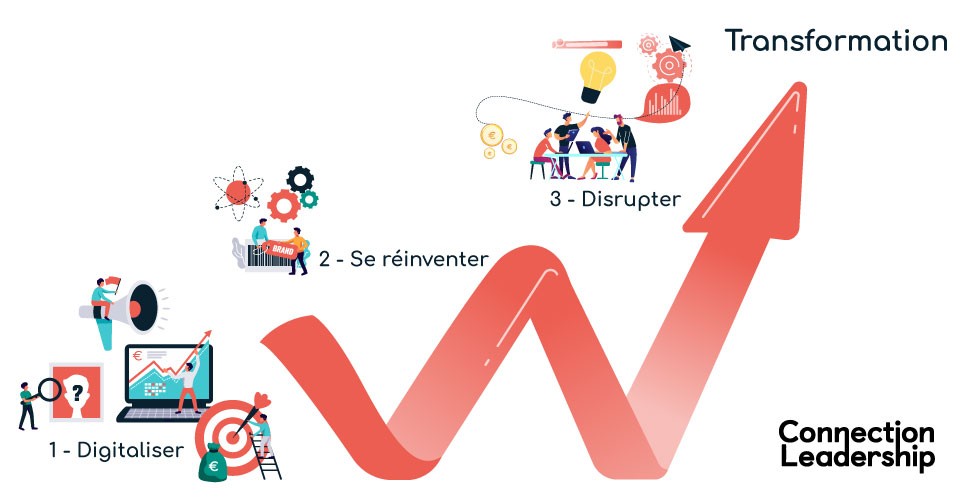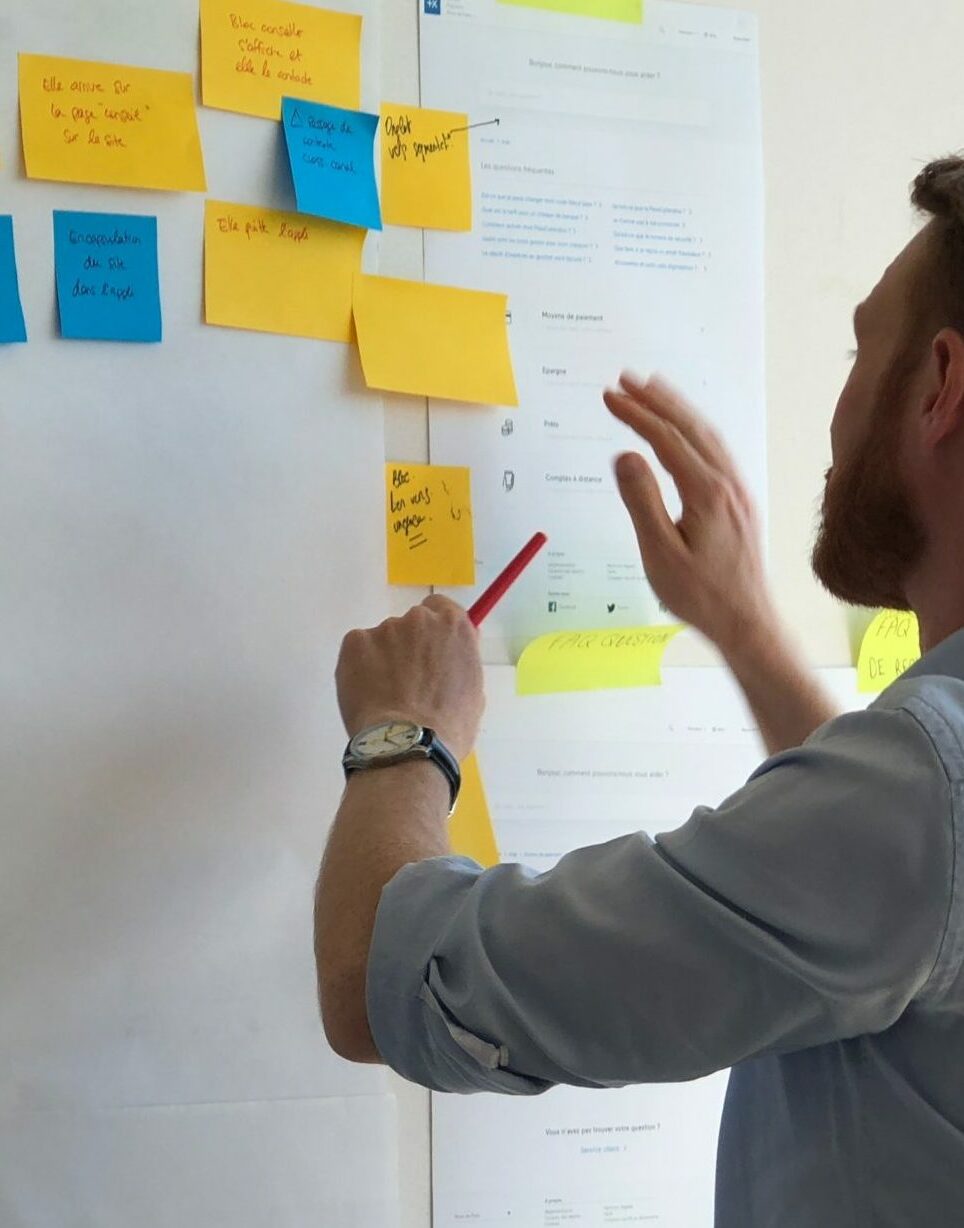Some 64% of major French groups are considering cutting their innovation budgets because of the economic impact of the pandemic on their business.* At the same time, the health crisis has revealed the intrinsic need for companies to innovate quickly, efficiently and disruptively.
The question of how remains, and with it the notion of success: how do you manage your transformation when you’re an ETI, an SME or a major corporation? How do you get the various stakeholders on board? How do you avoid the pitfalls and failures that are synonymous with frustration for stakeholders, and wasted time and money for managers? The answer to these questions, adapted to the current situation, is one that has not been sufficiently explored: the holistic innovation laboratory.
Innovation as such is nothing new, but its definition has evolved over the last decade. Whereas innovation used to concern only the product – and was therefore the responsibility of R&D teams – it now covers a much wider perimeter. The reason for this change is obviously linked to the global transformation of brands. These changes naturally impact the entire company, challenging all its departments in the process: HR, finance, purchasing, distribution, communications, marketing and so on. As a result, the structure is forced to rethink innovation in every pore of its skin… in order to create its future. This multi-dimensional approach is the sine qua non for a successful approach.
The three levels of transformation
In my opinion, there are three levels – or wave forces – of transformation: the first, common to all companies, is of course digitalization, which has accelerated with the current health crisis. While this has a major impact on organization and processes, it does not alter the company’s DNA. The second level concerns brands, which have to reinvent themselves to counter the arrival of new players positioned upstream or downstream of their value chain. Finally, the last level, by far the most critical, is the phenomenon of disruption, i.e. the arrival on the market of disruptors who upset or even threaten incumbent companies by introducing a new business model that challenges the traditional one. These disruptors target a part of the market, sometimes hitherto ignored by the “incumbents”, before establishing themselves on the whole. Whatever the intensity of the wave, the risk is in not being sufficiently prepared to resist this disruption!
Innovate, yes, but according to which model?

For companies, the question is no longer “should we transform? but rather “how can we make a success of our transformation? And there is a wide range of practices in this area: some major groups have chosen to internalize the process, for example by creating innovation units.
Others to join an incubator or become part of an investment fund. Still others collaborate with, or even acquire, startups for their ability to move fast, to bounce back quickly from failures, all with limited resources. While there are many models to choose from, only a few provide real satisfaction. When we look at the various analytical approaches, we see that the overall results are often not commensurate with the resources deployed. When the transformation is carried out in-house, particularly in intrapreneurial mode, frustration is regularly the order of the day, due to a lack of disruptive recommendations. Conversely, when the process is entirely outsourced, the POCs** developed often come up against the company’s historical processes. The reason for this? A lack of cross-functional vision, and sometimes a refusal on the part of a manager or a brand to question itself – and this is crucial! The speed of a company’s transformation is linked to the speed of the transformation of its managers’ mindset.
“The speed of business transformation is linked to the speed of transformation of the mindset of its leaders.”
The holistic approach as a lever for transformation
To succeed, it is essential to highlight the different dimensions that need to be taken into account in order to successfully transform the company. Most unsuccessful transformations stem from a failure to take complexity into account. Through a holistic approach, which combines extensive benchmarking with in-depth knowledge of the human being, brands must co-create in a global way, precisely reconciling their cultural, technological and business visions. From my point of view, one cannot go without the others.
In concrete terms, the Holistic Innovation Lab, an essential component of a transformation, is divided into several phases: first, stepping out of your comfort zone, opening up your chakras and taking an interest in all the weak signals, both internal and external. Next, identify the potential within the company to drive the process. To commit a group to a lasting transformation, innovation must not be embodied solely ad hominem by a manager likely to change position, but must be aligned with the global strategy and the expectations and needs of employees. Throughout its development, the Holistic Innovation Lab addresses the cultural issues that prevent the company from transforming itself. This is what sets it apart from other approaches, and enhances its ability to bring about sustainable systemic change.
“Throughout its development, the Holistic Innovation Lab addresses the cultural issues that prevent the company from transforming itself. And that’s where it stands out from other approaches, and enhances the ability to bring about sustainable systemic change.”
It’s essential to create emulation between individual and collective dimensions, and to give meaning to everyone’s actions. Especially if we are to enter the third stage, which involves selecting and implementing the right ideas. To do this, we have to overcome our often deeply-rooted convictions, and look beyond the purely financial question to other, more meaningful indicators. Indeed, it’s essential not to confuse the issue: the challenge is not to enable the company to multiply its margins, but to be sustainable in its market. Finally, the last step is to implement the selected POCs and roll them out where appropriate, always ensuring that the existing ecosystem remains in balance, as this is the key to a successful transformation!

Co-founder of Connection Leadership, a consulting, training and coaching firm specializing in business transformation, Patrick Hoffstetter spent 30 years in a number of management positions at SNCF, Yahoo, SFR, lastminute.com and Renault.
He is a senior advisor at Vivatech, and a member of several boards.
For advice on your transformation, contact us at formations@connectionleadership.com

